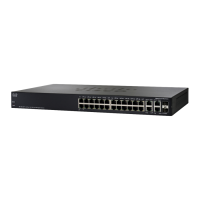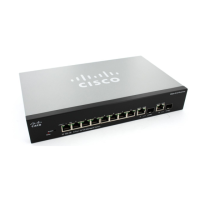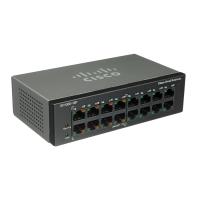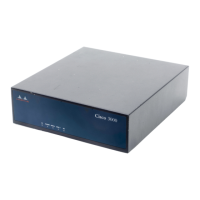ACL Commands
121 OL-32830-01 Command Line Interface Reference Guide
4
no permit tcp
{any | {source-prefix/length} {any | source-port/port-range}}{any |
destination- prefix/length} {any| destination-port/port-range} [dscp number |
precedence number] [match-all list-of-flags] [
time-range
time-range-name]
[log-input]
no permit
udp {any | {source-prefix/length}} {any | source-port/port-range}}{any |
destination- prefix/length} {any| destination-port/port-range} [dscp number |
precedence number] [
time-range
time-range-name]
[log-input]
Parameters
•
protocol
—The name or the number of an IP protocol. Available protocol
names are: icmp (58), tcp (6) and udp (17). To match any protocol, use the
ipv6 keyword. (Range: 0–255)
•
source-prefix/length
—The source IPv6 network or class of networks about
which to set permit conditions. This argument must be in the form
documented in RFC 3513 where the address is specified in hexadecimal
using 16-bit values between colons.
•
destination-prefix/length
—The destination IPv6 network or class of
networks about which to set permit conditions. This argument must be in
the form documented in RFC 3513 where the address is specified in
hexadecimal using 16-bit values between colons.
•
priority
- Specify the priority of the access control entry (ACE) in the access
control list (ACL). "1" value represents the highest priority and "2147483647"
number represents the lowest priority.(Range: 1-2147483647)
• dscp
number
—Specifies the DSCP value. (Range: 0–63)
• precedence
number
—Specifies the IP precedence value.
•
icmp-type
—Specifies an ICMP message type for filtering ICMP packets.
Enter a number or one of the following values: destination-unreachable (1),
packet-too-big (2), time-exceeded (3), parameter-problem (4), echo-request
(128), echo-reply (129), mld-query (130), mld-report (131), mldv2-report
(143), mld-done (132), router-solicitation (133), router-advertisement (134),
nd-ns (135), nd-na (136). (Range: 0–255)
•
icmp-code
—Specifies an ICMP message code for filtering ICMP packets.
(Range: 0–255)
•
destination-port
—Specifies the UDP/TCP destination port. You can enter a
range of ports by using a hyphen. E.g. 20 - 21. For TCP enter a number or
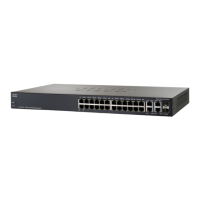
